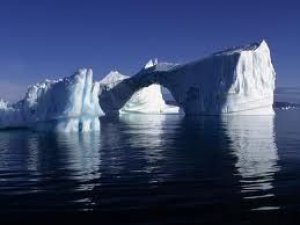
All iLive content is medically reviewed or fact checked to ensure as much factual accuracy as possible.
We have strict sourcing guidelines and only link to reputable media sites, academic research institutions and, whenever possible, medically peer reviewed studies. Note that the numbers in parentheses ([1], [2], etc.) are clickable links to these studies.
If you feel that any of our content is inaccurate, out-of-date, or otherwise questionable, please select it and press Ctrl + Enter.
2010 was a record year in terms of summer Arctic sea ice volume reduction
Last reviewed: 30.06.2025
 ">
">Last year, the summer extent of Arctic sea ice fell to a record low.
The previous anti-record holder was 2007.
Estimating ice volume is fraught with obvious difficulties. Satellites provide fairly accurate data on ice area, but this is not enough to understand what is happening in the Arctic. Many experts note that the reduction in ice area is only half the trouble. The ice is thinning: the thick, multi-year cover is being replaced by a young, thin, unstable one. Therefore, even a possible increase in ice area is not able to calm the experts.
Meanwhile, it is impossible to measure the thickness of ice in the Arctic. We have to resort to modeling based on limited measurements. Many scientists do not trust the models: the uncertainty and the probability of error are too great.
However, Axel Schweiger from Washington State University (USA) and his colleagues believe that even taking into account all the errors, the volume of ice in September 2010 (at its lowest point) was less than the 2007 figure.
The researchers used the well-established PIOMAS (Pan-arctic Ice Ocean Modeling and Assimilation System) model. They showed that for October 2010 the error could be ±1.35 thousand km³, and for calculating the rate of ice volume reduction in 1987–2010 – ±1.103 km³ per decade. Thus, the most conservative estimate of the rate of summer ice volume reduction is 2.8 thousand km³ per decade.
Some experts believe that the rapid loss of summer ice in the Arctic is the result of a long-term thinning that supposedly began long before the current global warming. But the new study could find nothing in the past that matches the current 32-year trend in ice loss.
At this time, the area of Arctic ice is on the way to a new anti-record. Last week, the ice cover occupied an area of 4.6 million km², and it still has about two weeks to melt. The minimum of 2007 is 4.13 million km².
For comparison: in the early 1970s, this figure was around 7 million km². There is no doubt that by the end of the century, the Arctic will be completely ice-free in the summer. The only dispute is about the exact date.
 [ 1 ]
[ 1 ]
